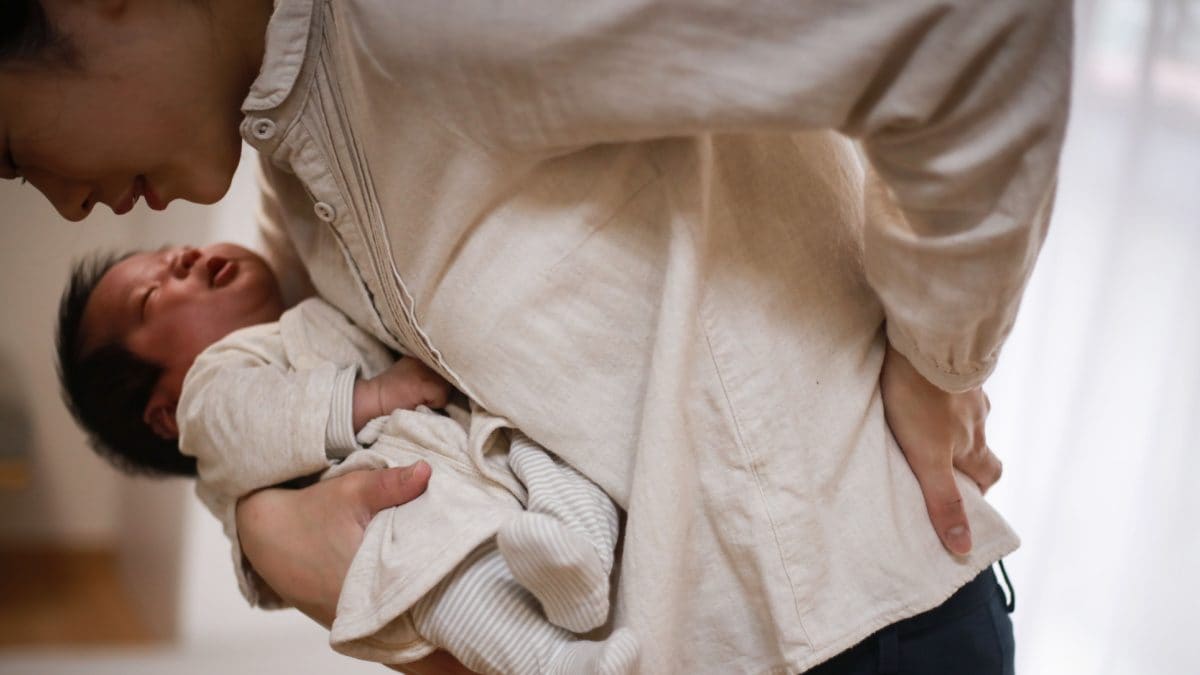[ad_1]

Understanding the causes of C-section-related back pain is crucial for proactive management
Amid the whirlwind of caring for your newborn, it’s easy to neglect your own pain, potentially leading to severe and persistent back issues
Pregnancy is an awe-inspiring journey that brings with it numerous physical changes, and for many women, back pain is one of the common consequences. It’s surprising to note that over 70% of pregnant women, including those who undergo C-sections, experience this discomfort. However, amid the whirlwind of caring for your newborn, it’s easy to neglect your own pain, potentially leading to severe and persistent back issues.
Hetal Desai, Masters in Physiotherapy, Certified Women’s Health Specialist, Healyos shares the causes and remedies for C-section back pain:
Causes of C-Section Back Pain
It’s crucial to be aware of the various factors contributing to back pain following a C-section delivery:
- Hormonal Changes: During pregnancy, your body produces the hormone relaxin, which loosens ligaments and joints to facilitate delivery. Remarkably, whether you have a vaginal birth or a C-section, this hormone remains active, increasing the risk of straining your back. Fortunately, for most individuals, joints, muscles, and ligaments regain strength gradually in the months after delivery.
- Lifting and Carrying the Newborn: Although your newborn may appear small, usually weighing around 2-3 kilograms, the constant lifting and carrying throughout the day can exert significant stress on your back. Repetitive motions of bending to lift the baby from the stroller, crib, or car seat often lead to strain, making back and neck issues common among new parents.
- Weight Gain: Post-delivery, factors such as antibiotics and surgery can contribute to weight gain. This added weight places pressure on your back and spine. Furthermore, the baby’s positioning and movements in the womb can cause substantial strain in the abdominal region, exacerbating discomfort.
- Anesthesia Impact: During delivery, medical professionals frequently administer epidural or spinal block anesthesia to numb the area for surgery. In the post-delivery phase, this anesthesia may induce muscle spasms that persist for weeks or even months, contributing to back pain.
- Breastfeeding: The seemingly straightforward act of breastfeeding can also influence back pain. Slouching shoulders and lowering your neck while feeding the baby can lead to the development of discomfort in the back.
Effective Exercises for C-Section Back Pain
To help manage and alleviate C-section-related back pain, consider incorporating these carefully chosen exercises into your routine:
- Pelvic Tilts: Lie on your back with knees bent and feet flat on the floor. Tighten your abdominal muscles and tilt your pelvis upward. Hold for a few seconds, then relax. Repeat 10 times.
- Cat-Cow Stretch: Start on your hands and knees. Inhale as you arch your back (Cow Pose), and exhale as you round your back (Cat Pose). Repeat this stretch 10 times.
- Child’s Pose: Kneel on the floor and sit back on your heels, stretching your arms out in front of you. Hold for 30 seconds to 1 minute, repeating as needed for relief.
- Bridge Exercise: Lie on your back with knees bent and feet flat on the floor. Slowly lift your buttocks and lower back off the floor, engaging your core. Hold for a few seconds, then lower back down. Repeat 10 times.
Understanding the causes of C-section-related back pain is crucial for proactive management. Engaging in these carefully selected exercises, under the guidance of a healthcare professional, can aid in post-C-section recovery and the gradual rebuilding of core strength. Prioritizing your well-being and paying attention to your body’s signals throughout the process will contribute to a smoother postpartum experience for both you and your baby.
[ad_2]
Source link





